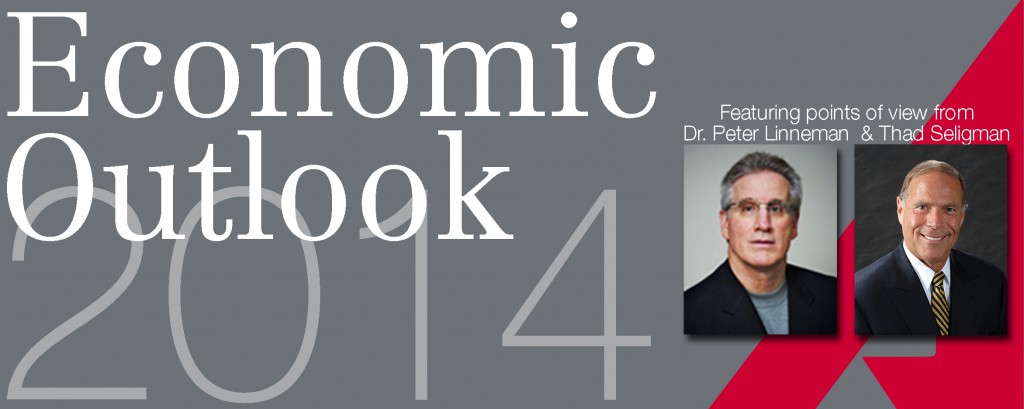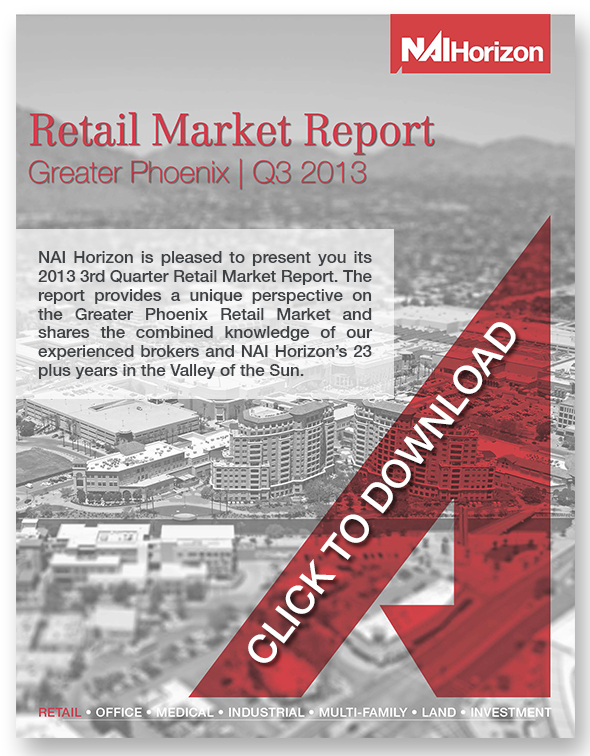
This year showed signs of recovering activity in all sectors of the commercial market, but the rallies seemed to come in fits and starts. The most consistent increase in activity took place in the retail sector. Office and industrial leasing seemed to show signs of activity, then stall, and then come back from one quarter to the next. The lack of consistent leasing momentum throughout the year was reflective of the overall lack of job growth and economic uncertainty in local and national markets. The investment markets were active in multifamily and institutional grade properties, but cap rates remained too low for many investors given the risks in the economy. There are still unanswered questions about where 2014 will take the commercial real estate market, but many indicators point to an increase in leasing activity and owner/user buying beginning in the second quarter of 2014 and continuing with a more consistent velocity as the year progresses.
As 2014 progresses, the economic climate of uncertainty should continue to stabilize. The biggest hurdle to overcome is general consumer confidence and the willingness to spend money as before the recession. According to Dr. Peter Linneman, Chief Economist of NAI Global, “We don’t feel as rich as we used to, and we don’t feel as rich as we used to by a substantial amount. This is holding back consumer activity, and that’s a self-reinforcing problem. ” However, Linneman points out how this is slowly improving. Household debt service as a percentage of disposable personal income is lower than it has been in 20 years, and real US disposable personal income per capita is back to the 2008 high, while still below trend. While we have recovered to pre-recession level, most people are where they were five years ago, aiding in the lack of consumer confidence when expecting normal increases. As this continues to improve and the recession falls further into the past, consumers will begin to “feel rich” again, aiding in the overall economic recovery.

The Greater Phoenix Market also continued down the road to recovery in 2013, and will remain on this path in the New Year. As vacancy continues to decline in most sectors, and rental rates stabilize, 2014 is expected to be another year of the market correcting itself, preparing for a more prosperous 2015. With changes to the commercial market typically following those in residential, the forecast for increased permits and home buying in 2014 should result in an improved commercial market in 2015.
During 2013, the Phoenix industrial, retail, and office sectors saw flat or declining vacancy rates from the end of 2012. Both office and industrial average rental rates saw slight increases, with office increasing from $19.99 in Q4 of 2012 to $20.42 in Q4 of 2013, and industrial increasing from $6.03 to $6.25. Net absorption fell in industrial and office, with an approximate 48% decrease from 2012 to 2013 in both sectors. Retail however increased absorption by almost a million SF from 2012 to 2013.
As of November, Arizona’s unemployment rate dropped by four-tenths of one percent to 7.8%, adding 25,900 nonfarm jobs in November, the vast majority being added in the private sector. The state’s seasonally adjusted unemployment rate in October was 8.2%, down from 8.3% in September. The national jobless rate dropped nearly as much as the state rate coming in at 7%, down from 7.3% the previous month. President and CEO of NAI Horizon, Thad Seligman, stresses the importance of positive employment news. “In the final analysis, job growth is the key to our recovery in Arizona and it looks like we will see, albeit somewhat limited, growth in newly created jobs in the market during the coming year.”


